A Guide to the Hasselblad System
#photographyhobbyist #photographybestoftheday #photographyforever


When it comes to photography, Hasselblad is one of those legendary names students hear about during history lessons. The name is considered synonymous with high class photography from the most earliest days of the medium, with quality image capturing machines that provide great function and performance as well as versatility. The Swedish company has produced cameras that have been in war zones and space missions, and their largely medium format camera systems are quite hardcore, known for being used by professionals and amateurs that are serious about photography.
What Is A Hasselblad?
Hasselblad started producing cameras for civilian use in 1948. Their cameras are mostly in 6x6 medium format which have interchangeable lenses, viewfinders and film magazines. Most of their cameras feature leaf shutters built into the lenses, but a few lines also have focal plane shutters. The top of the camera body incorporates a waist level view finder with a ground glass reflex screen. The Hasselblad system is well known for the fact that all accessories are usually compatible with different models, and so can be easily switched around. For most of the V-system camera lines all lenses were produced by Carl Zeiss.
The aim of Victor Hasselblad was to produce cameras which had extremely high shutter speeds and image quality but were also compact and portable. Most of the models that were released remained very similar in general design but evolved in terms of functions and performance as the years went by. Let’s have a look at some of the more popular and significant camera lines produced by Hasselblad.
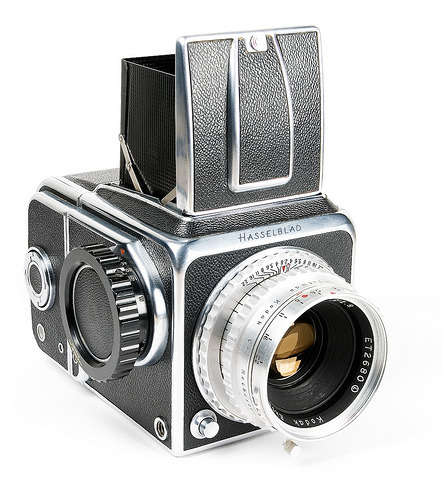
Beginnings
The first camera produced by Hasselblad in 1948 was the 1600F, named after the fact that it had the fastest shutter speed of 1/1600 sec and had a Focal plane shutter. This first camera by Hasselblad was considered revolutionary in its versatility offered by the interchangeable viewfinder, film magazine and lenses, although there were some kinks which were worked out during the length of its production.
In 1953, 1600F was replaced by the 1000F model, which was named after its even faster minimum shutter speed of 1/1000 sec. Hasselblad used a much improved shutter mechanism for this model which was more tough and reliable. While Kodak Ektar was providing lenses for the Hasselblad cameras in the beginning, by this time Cark Zeiss was in the picture and this model came with these lenses.
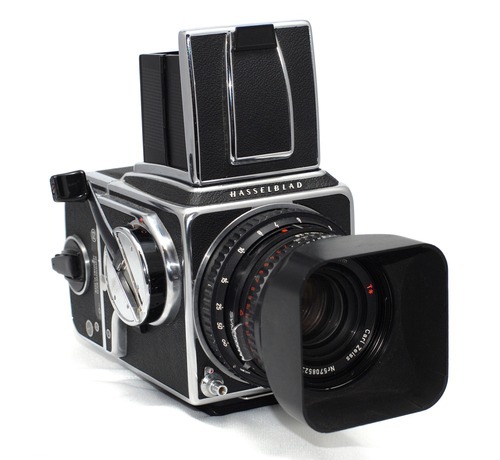
The V-System
500 series: After the 1000F, Hasselblad went on to replace the focal plane shutter with the leaf shutter installed into the lenses. This shift was born out of Victor Hasselblad’s quest to develop a smaller camera with faster lenses and shutter, and is probably what defines the V-system series. These were all 6x6 format cameras, the first and probably most popular and significant of which was the 500C introduced in 1957. It remained in production for 40 years and a modified version of this was the camera that went to the moon. It was important because the leaf shutter meant that there could now be automatic flash synchronizations at all shutter speeds.The rest of the 500 and 501 series were variations of this with various improvements, additions and subtractions, such as the 500 C/M which replaced the 500 C with a changeable screen, and the 501 CM produced in 1997 with a Gliding Mirror System (GMS) to reduce on the screen vignetting.
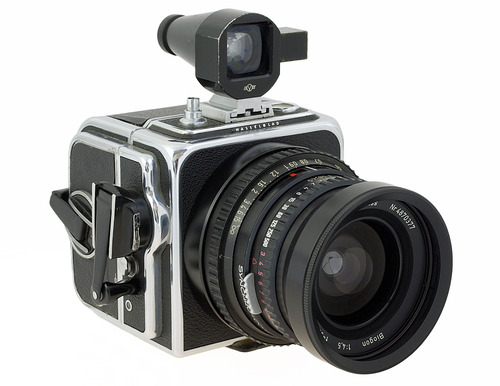
Superwide
Along with this, the Superwide (SW) series was also released in 1954, which was a “super wide angle” camera with a fixed Carl Zeiss lens. This was intended for architectural photography, and also incorporated a leaf shutter. Its successors were released with various improvements and remained in production up until 2006.
500 EL and 503
Along with the 500 series came the 500 EL in 1964 which were motor driven SLRs with a built in film winder and were otherwise similar to the 500C. This model was also replace by subsequent improved models, the third one of which, 500 ELX, introduced the TTL/OTF (through the lens/ off the film) flash metering system. This was also seen in the 503 series, starting with the 503 CX which was an addition to the 500 C/M, and the 503 CXi which added a winder connection and a GMS.
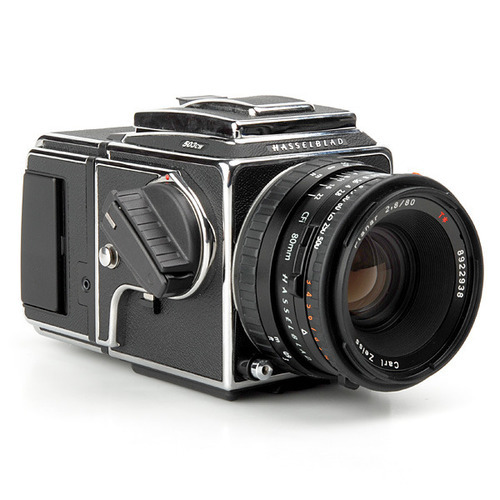
{Hasselblad 503 CWD medium format SLR}
In 2006, the 503 CWD was released on Victor Hasselblad’s 100th birthday as a limited edition with CFV 16 MP digital back. The 555 ELD from the 500 EL series in production from 1998-2006 also came with Electronic Databus contacts which provided the option of attaching digital magazines.
2000, 200 and the Reversion to Focal Plane
With the 2000 series, Victor Hasselblad was attempting to achieve those fast shutter speeds again with focal plane shutters. The fastest speed of the 2000 FC produced in 1977 was 1/2000 sec. However, this time round Hasselblad came back with a better focal plane shutter made with titanium instead of the previously used stainless steel shutter. As newer models were released improvements were made such as winder connections and better shutter protection when film magazines were taken off.
The titanium shutter was replaced by a rubberized cloth shutter with the 200 series in 1991. This series was a bit more electronic, with automatic exposure metering and TTL/OTF flash system. The last one of these, the 202 FA did not even have a manual mode.
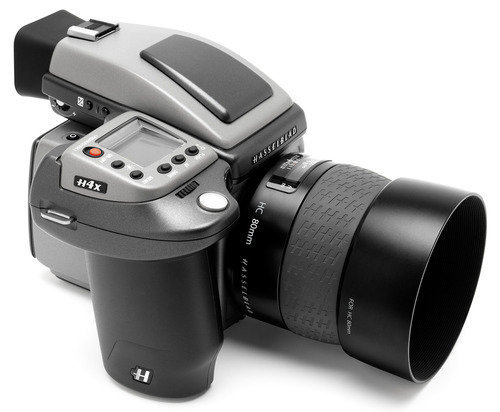
H-System and evolution to Digital
The H-system was launched in 2002, and it was with this launch that the previous models earned the name V-system, after Victor Hasselblad. The H1 medium format SLR was distinct from its predecessors in many ways. For one, the long standing 6x6 format so loved by Hasselblad was changed to 6x4.5. It also departed from the traditional Carl Zeiss lenses in favor of those produced by Fujinon.
The H series was also the beginning of the digital age for Hasselblad where they started providing the option of digital backs as well as film backs for their camera models. The H1 took both 120 and 220 rolls of film as well as a digital back. Hasselblad also released a digital version of the H1, the H1D, which could only be used with an Imacon 22 mp digital back iXpress which has to be connected with an external hard drive at all times.
Hasselblad subsequently released further improved models which could be better integrated with their digital backs, could be used with CF cards and had better software operating it. Their latest product line was introduced in January 2014, which is the world’s first medium format CMOS camera.
Conclusion
So the Hasselblad system has come a long way through its very long history, entering the digital age as any camera company must do to keep up with the digital age. However, their most iconic products were seen in the age of the film, when they were seen as pioneers in the industry. Hasselblad cameras have been in space, were in fact the cameras that the fist images of space and the moon were taken with, which is really kind of cool. The first cameras they ever made for us normal people, the 1600F and 1000F may still be floating around in the market, but have reached unusable stage because of neglect and age.
These cameras have made history, and some of the best, albeit expensive, medium format cameras you will get would have the Hasselblad name on it. Expensive because of the fact that that name means something, and if you can get an old Hasselblad, especially something like the antique 1600F in good working condition, it will be a rarity. But it is true if you want to hold a piece of history in your hands, you shouldn’t feel so bad about paying the price.
Courtesy of: I Still Shoot Film
No comments:
Post a Comment
Note: Only a member of this blog may post a comment.